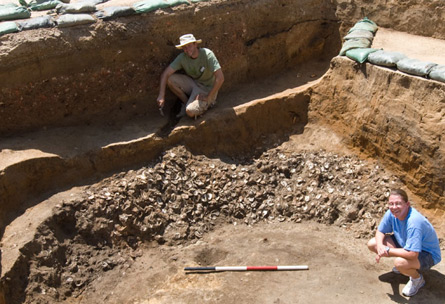Science News
Oyster Detectives

“CSI Jamestown”. That’s how UC Davis researcher Howard J. Spero, PhD, describes his work in yesterday’s Science News.
He and his colleagues found 400 year-old discarded oyster shells and other trash at the bottom of a long abandoned well in Jamestown, Virginia, site of the oldest English settlement in the US. The presence and geochemistry of the shells told the scientists that the water in the James River was much saltier at the time than it is now, confirming that the area was in the middle of a severe drought around the time the settlers arrived. The research was published yesterday in Proceedings of the National Academy of Sciences.
From Science News:
“It was interesting trying to figure out what was happening in the colony at a time when 70 to 80 percent of the colonists were dying,” Spero says.
Now, oysters independently confirm the tale from trees and historical accounts, comments William M. Kelso, an archaeologist at Preservation Virginia’s Jamestown Rediscovery project who was not involved in the study. “We’re getting a consistent story from science and the humanities,” he notes. “It’s pretty fantastic.”
(Several years ago, scientists used tree rings to posit that as the settlers arrived, the area was suffering its worse drought in 800 years.)
From Discover:
In an interesting twist, it was that increased salinity that extended the oysters’ range so far into the James River. So, the shells that the colonists discarded after they ate the oysters tell the tale of the drought that led the colonists to eat the oysters in the first place.
Besides serving as an indicator of the kind of water that may have been present in a particular region, oyster and clam shells, like tree rings, can also provide clues as to the chemicals surrounding them at different stages of growth. In fact, the Academy’s Peter Roopnarine is currently involved with a project studying the effects of the Deepwater Horizon oil spill on oysters and clams in the Gulf of Mexico. This research effort involves studying shells now and then again at the end of the summer. You can read more about that study here.
Image credit: Preservation Virginia